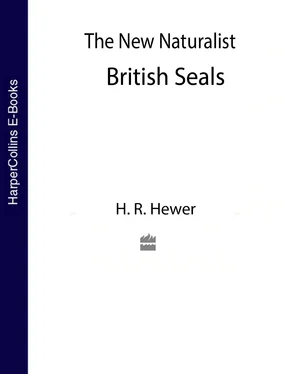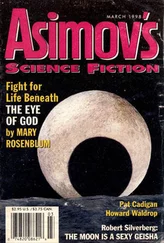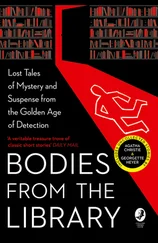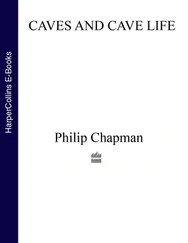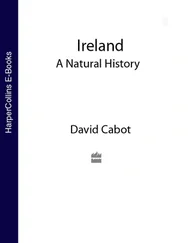In some instances we still do not know enough to be certain whether we are dealing with one or two groups. For example, a number of grey seals breed on the north Cornish coast, there is an occasional birth on the Isle of Lundy and many more breed on the islands and coast of Pembrokeshire and Cardiganshire. Are we justified in thinking of these as a single working unit or ‘group’, or are there two? To add to the difficulty, just across the St George’s Channel, grey seals breed on the Irish islands of the Saltees and farther north on Lambay Island off Dublin. Should these be separated or included? What sort of evidence is there? We know that there are no breeding sites in the northern part of the Irish Sea but in the area of the Mersey Bight many can be seen in the non-breeding period of the year as well as on Bardsey Island off the Caernarvonshire coast and around Holyhead Island. Their numbers wane during the period when the Pembrokeshire seals are breeding but some, instead of going south, might well go west or south-west and breed on the Irish coast. Many a young seal in its first grey coat, only a month or so old, marked in Pembrokeshire, has turned up on the coast of Ireland even as far west as Galway Bay. Do they come back to the Welsh coast when they are mature, or do they join the Irish breeding seals? So far we have no definite answer and I prefer to think of a south-western group which would include all those I have already mentioned on the west and south coasts of Ireland, the Irish Sea, west Wales and Cornwall, the Isles of Scilly and Ushant off the Brittany coast.
Other ‘groups’ for which there is some evidence are: Southern Hebridean, comprising breeding areas on the Treshnish Isles (off Mull), in the islands around Oronsay such as Eilean nan Ron and Ghaoidmeal and the occasional birth recorded on Rathsay Island off Antrim, Northern Ireland; Outer Hebridean, covering Gaskeir, Shillay, Coppay, Haskeir, Causamell, St Kilda and North Rona, including Sula Sgeir; Orkney and Shetland; North Sea comprising the Farne Islands, Isle of May and Scroby Sands ( Figs. 9and 10).
The islands detailed here are noted for the presence in the breeding season of rookeries but there are other kinds of collections of grey seals particularly in the non-breeding season to which descriptive names have been given. Where the character of the collection is unknown it may simply be called a ‘haul-out’. This may be qualified by the addition of an adjective as in a ‘fishing haul-out’. Such a haul-out is temporary in the sense that although it may be regularly used the number of the individuals may vary from day to day and no one seal will necessarily remain there for very long. A fishing haul-out is one where there are collected a sample of the grey seal population using that area for fishing, as a temporary resting or basking site. The West Hoyle Bank off the Wirral peninsula is a good example ( Pl. 22). The seals there may vary from a very few (less than a dozen) to upwards of 200 depending on weather and tide. When not hauled-out they are probably feeding in the northern part of the Irish Sea. In some groups the absence of widely distributed haul-out sites often results in the same islands or groups of islands being used both as rookeries and for fishing haul-outs. It is rare however for exactly the same site to be used for the two purposes.
FIG. 9. Distribution of the grey seal in British waters. Coasts where sightings have been recorded are shown in thick black line.
Another type of haul-out is the ‘moulting haul-out’. These occur only in the later part of winter or early spring and consist predominantly of one sex or the other ( Pl. 14). Such sites may be also used at other times as fishing haul-outs, but during the moult the numbers are often very great amounting to several thousand in the larger groups such as Orkney and Shetland. The number of these sites appears to be quite small, one or two alternative sites for use in different weather conditions sufficing.
As the breeding season approaches there are pre-breeding ‘assemblages’, not on the actual ‘rookeries’ or breeding sites, but usually adjacent. The number of seals there diminishes as the breeding season gets under way, but are replaced often on different skerries or islands by ‘reservoirs’ of grey seals. More will be said about the characteristics of these haul-outs later.
It cannot be too strongly emphasised that all of these haul-outs, including even the breeding rookeries, are biased samples of the population of the group. Never are all the members of a group collected together even within the land area covered by a number of breeding rookeries and reservoirs. Consequently there is no easy way to estimate the total number of grey seals in a group even if it were possible to carry out a simultaneous census on all land sites. The question ‘How many grey seals are there?’ is often asked by the layman. It is one of the most difficult to be answered by the scientist.
Some description of the geography involved is now desirable. Fraser Darling drew attention to the very variable conditions in which the grey seal breeds and considered that the land rookeries of North Rona represented the ancestral habit. Davies, who was a geographer as well as a zoologist, believed that the various breeding behaviours were forced on to the grey seal by the geographical features. Certainly it must be admitted that since the last glacial period the grey seal will have spread northward and that the most southern localities now used would have been the first to be occupied in these islands, if in fact they were ever entirely deserted. On the whole the evidence supports Davies. Certainly to understand the differences in behaviour the geography must be taken into account ( Fig. 10).
SOUTH-WESTERN GROUP
This is the most widely dispersed group and although a considerable amount is known about the Welsh section, little information is available about either the Cornish or Irish sections apart from the barest outlines of the breeding localities. Throughout this group there is a tendency for the breeding sites to be small and contained in sea caves; they can hardly be dignified by the term rookeries as rarely more than a dozen cows pup in any one of the caves. Towards the middle of the breeding season pupping spreads to the beaches. These are either rocky or stony and backed by steep cliffs. Generally they are narrow so that at high water the sea may be lapping the base of the cliffs ( Pl. 2). If this is not true at neap tides, it certainly is at springs. Several authors have referred to this group as the ‘cave breeding seals’. Throughout the area will be found ‘seal caves’, the name may be used locally or may be ‘official’ and appear on Ordnance Survey maps. In many of the caves there are beaches only towards the back of the caves so that investigation can only be made from the sea. This feature has added to the difficulties of investigation for few, if any, of the local boatmen are willing to risk their craft close in among the rocks and currents of such exposed coasts. The steep cliffs also present problems if only of time in making a descent and return. However, they do provide vantage points for observation and counts of white coated pups can be made from the cliff-tops above the narrow beaches. At the sea caves observation can only be made of the cows bobbing about in the water. Observations over open beaches indicate that for every six pups on the beach about five cows can be seen as a maximum at any one time with their heads above water. One or more are usually off on a swim. This ratio can be applied to the caves to arrive at an approximate count of pups. Neither method allows one to make an accurate assessment of the age of the pup or its sex. This can only be done by ground investigation at close quarters. It is not surprising, therefore, that there is less accurate numerical information about the grey seals of this area than of any of the other groups. Another feature which adds to the difficulties of obtaining even the basic information is the length of the coastline involved. The island sites off the Welsh and Irish coasts are comparatively easy. As long ago as 1910 when the Clare Island survey was undertaken off Galway a reasonably complete account was given by Barrett-Hamilton of the breeding sites there. Similarly Lord Revelstoke (1907) describes the cave sites on Lambay Island, while more recently Davies gave an excellent record of the breeding season on Ramsey Island off Pembrokeshire. But the small widely distributed coastal beaches of Cornwall, the Welsh mainland and south-west Ireland have only been cursorily surveyed within the last few years. *
Читать дальше
